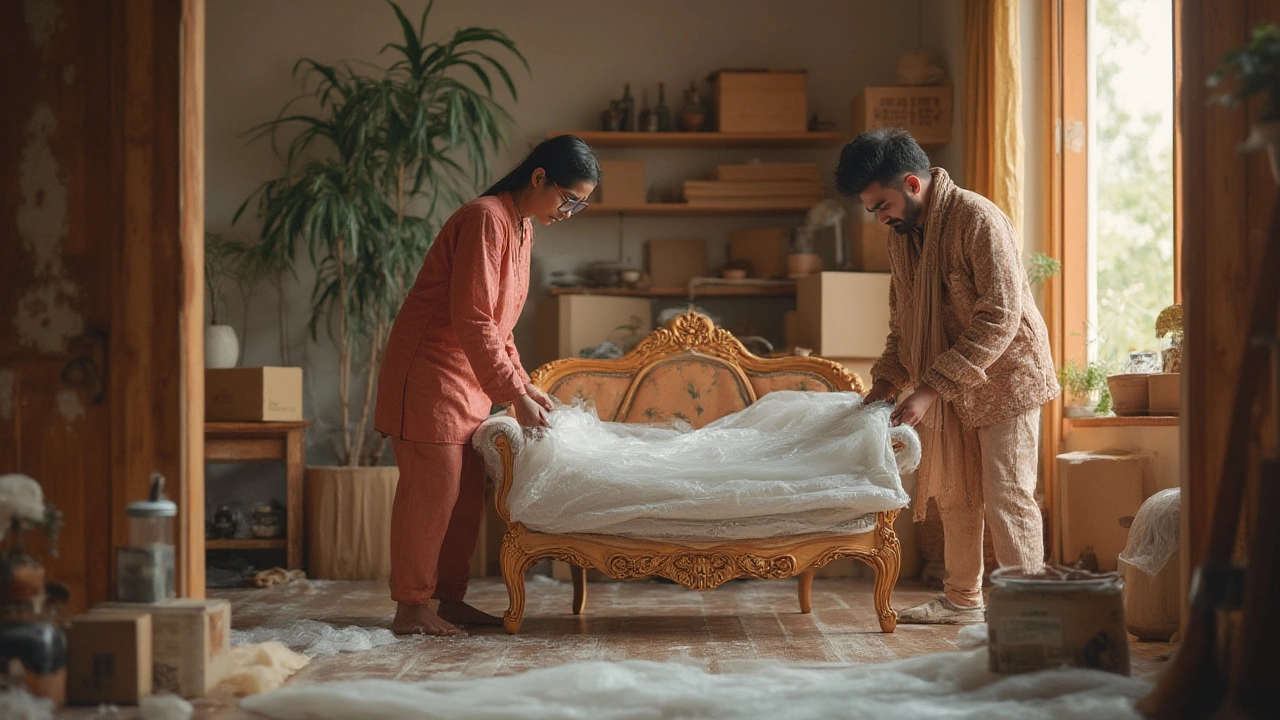Storage Conditions: Simple Steps to Protect Your Furniture
Ever wondered why some sofas look brand new after years in a storage unit while others get mouldy or warped? The secret is in the storage conditions. A few easy habits can stop damage before it starts, saving you money and frustration.
Control Moisture and Temperature
Humidity is the biggest enemy of wood, fabric, and leather. Aim for 45‑55% relative humidity and keep the temperature steady around 68‑72°F (20‑22°C). If your unit lacks climate control, place a small dehumidifier or silica gel packs in the corners. Check them every month and swap out the packs when they feel damp.
Temperature swings cause wood to expand and contract, which leads to cracks. Try to store furniture away from exterior walls or doors that get direct sunlight or cold drafts. A simple insulated blanket can buffer the temperature changes.
Cover Right, Not Wrong
Covering furniture makes sense, but the wrong cover can trap moisture. Use breathable fabric covers or cotton sheets instead of plastic. For leather sofas, a light cotton sheet works best; it keeps dust out but lets air circulate. If you must use plastic, leave a small vent open.
Don’t forget the legs and bases. Slip a piece of felt or rubber pad under each foot to prevent water from wicking up the legs. This also protects floors in the unit from scratches.
Before you wrap anything, give it a quick clean. Dust and food crumbs attract mould and pests. A vacuumed couch and wiped-down coffee table take less time to dry than a dirty one.
When stacking items, place the heavier pieces on the bottom and keep airflow pathways clear. A gap of at least two inches between stacked boxes lets air move, reducing the risk of mould.
If you’re storing a couch that needs to fit through a narrow hallway or corner, measure the width of doors and hallways first. Use a measuring tape to note the narrowest point, then compare it to the couch’s dimensions. Removing legs or cushions can give you extra inches.
For long‑term storage, consider disassembling furniture that allows it. Take off removable legs, cushions, or shelves. Store small parts in a labeled bag and tape the bag to the main piece so you don’t lose anything.
Finally, do a quick walk‑through of the unit every few months. Look for signs of water leakage, check the humidity meter, and make sure nothing has shifted. A small check now prevents a big repair later.
With these simple storage conditions—control moisture, use breathable covers, keep things clean, and plan for space—you’ll keep sofas, coffee tables, and other pieces in great shape for years to come.
Can Furniture Be Damaged in Storage? Expert Guide for Furniture Storage
Worried your furniture will get ruined in storage? Get the facts, real risks, and pro tips to keep sofas, tables, and more safe in any storage unit.





